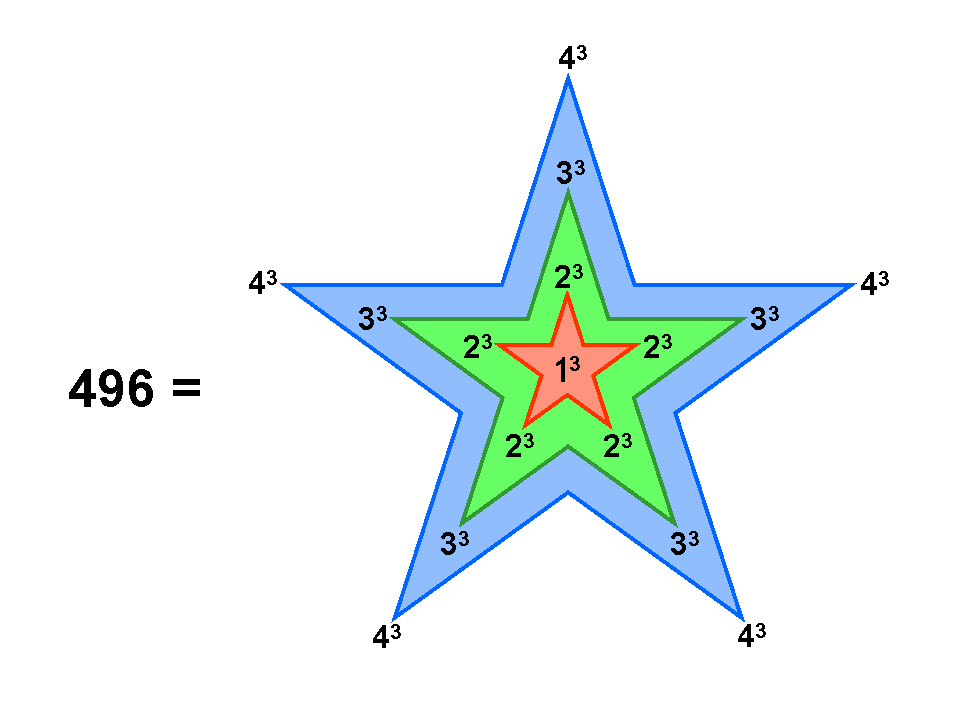
| << Previous 1... 4 5 [6] 7 8 ...50 Next >> |

As 496 = 1 + 5×99 and 99 = 23 + 33 + 43, the number 496 can be expressed as the sum of (42=16) cubes of the integers 1, 2, 3 & 4 located at the vertices of three pentagrams sharing the same centre. This is one way in which the integers 1, 2, 3 & 4 symbolized by the four rows of dots in the Pythagorean tetractys express the number 496 characterizing superstring forces.
It is well-known that the pentagram and its circumscribing pentagon display the Golden Ratio Φ = 1.618.... as the ratio of the lengths of their various parts, coloured red and blue below:
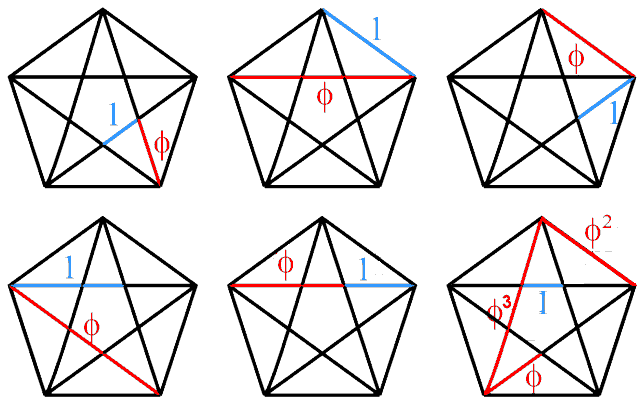
Here, therefore, is a mathematical connection between the Golden Ratio, the pentagram and the number 496 at the heart of superstring theory:
496 = 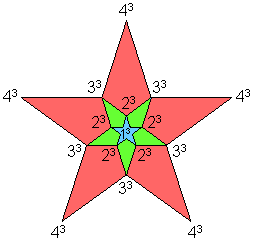
The number value 15 of YAH, the Godname of Chokmah, determines this number because it is the sum of 12 and the first five squares that start with 32, with three units separating each integer, and which end with 152:
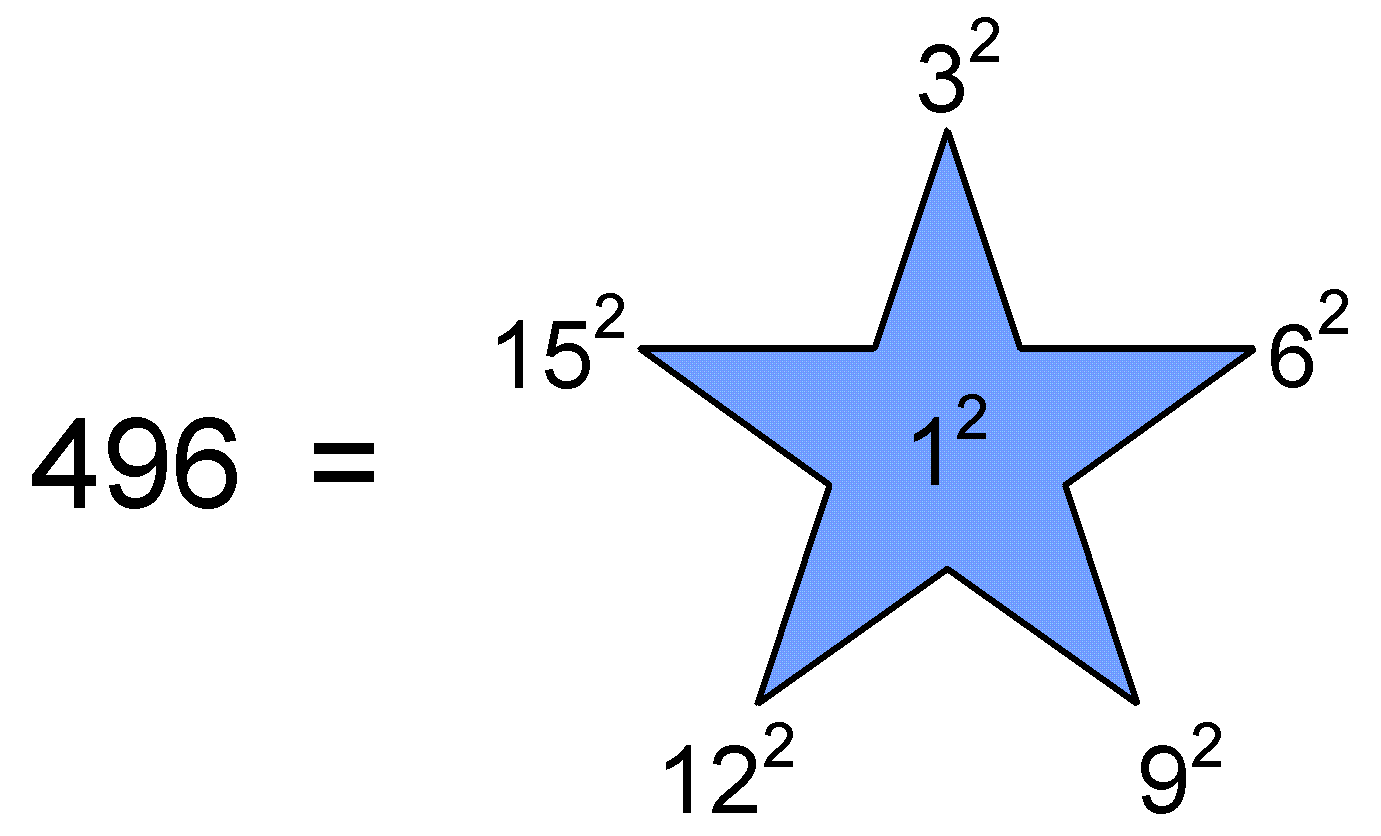
The pentagon also embodies the number 496 because, constructed from tetractyses, it contains 31 yods and 496 is the 31st triangular number, so that it is the sum of the first 31 integers that can be assigned to the 31 yods in a pentagon:
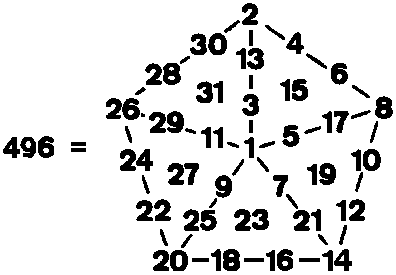
It is how the Godname EL of Chesed with number value 31 determines this number. The 5-pointed star embodies it, too, because 30 yods line its sides, so that assigning the integer 1 to its centre and the 30 integers 2-31 to its sides generates 496 as their sum.
| << Previous 1... 4 5 [6] 7 8 ...50 Next >> |